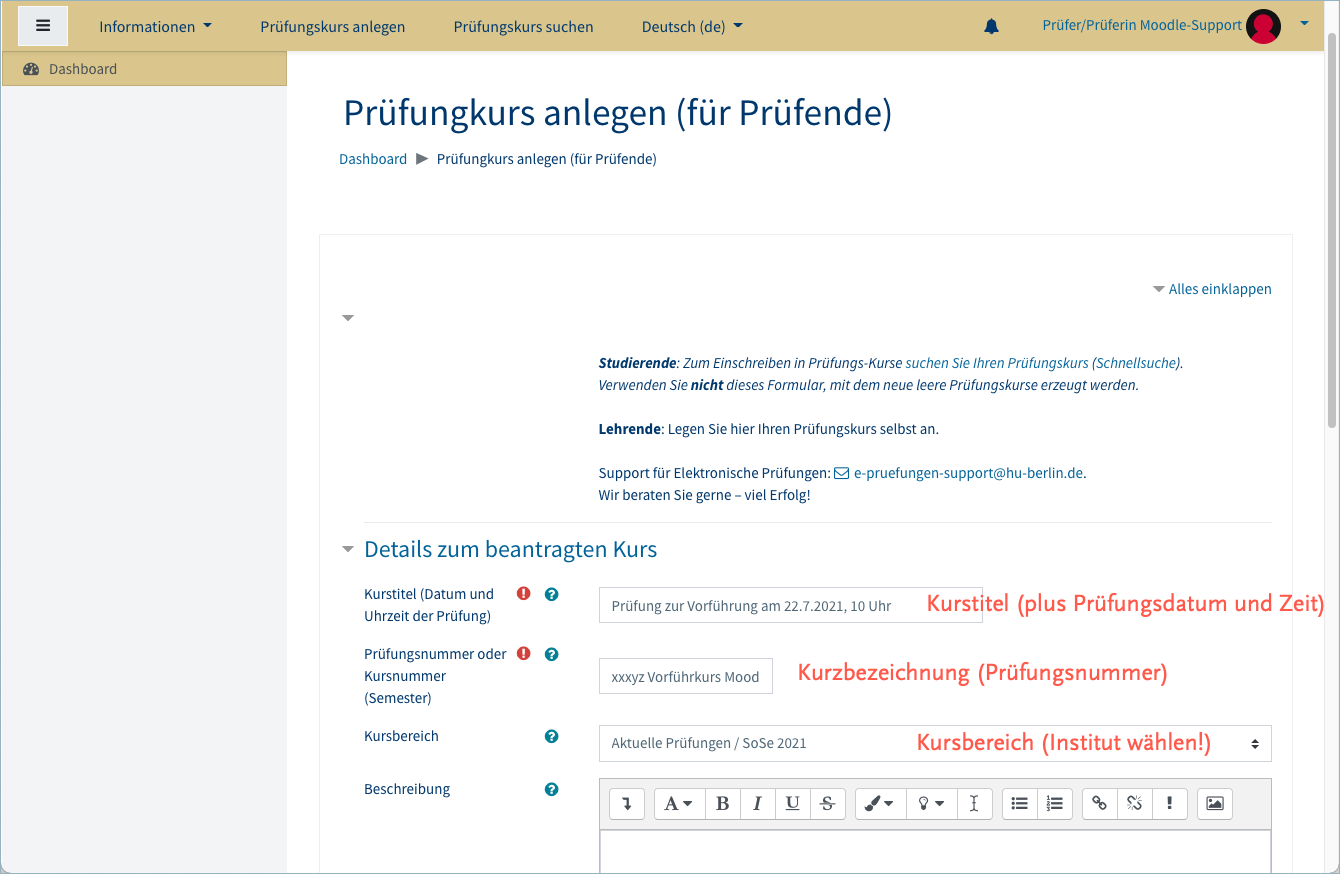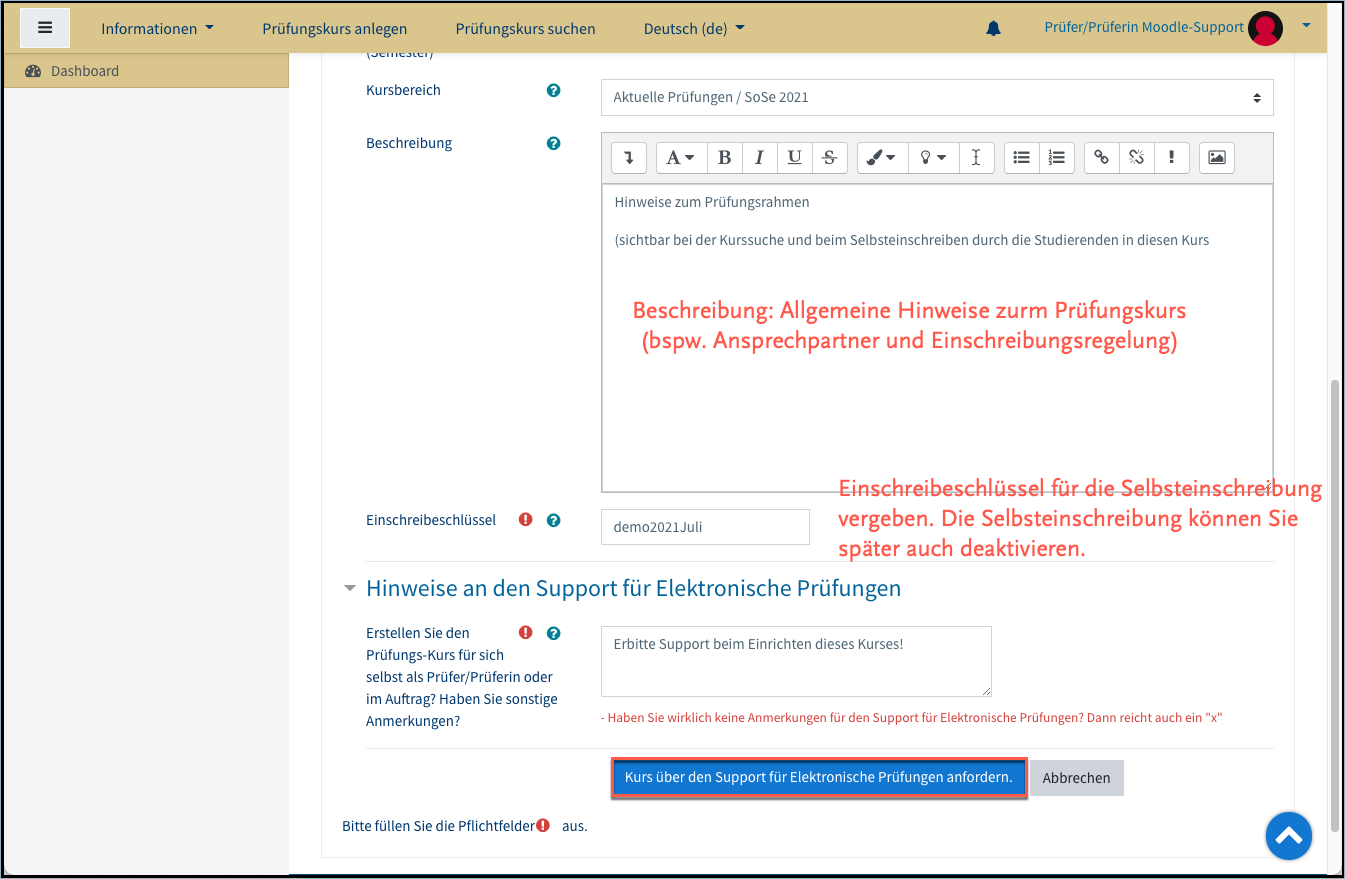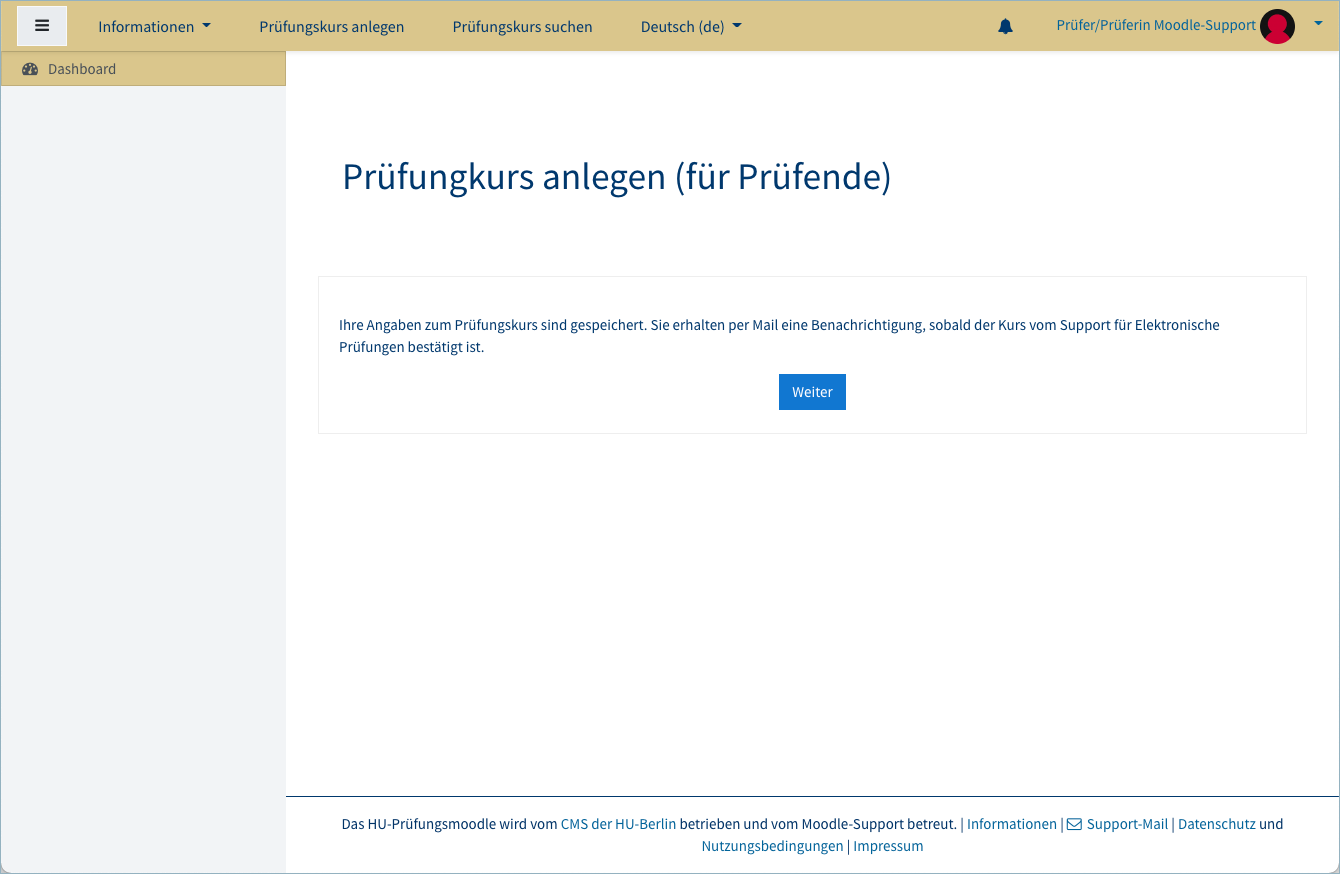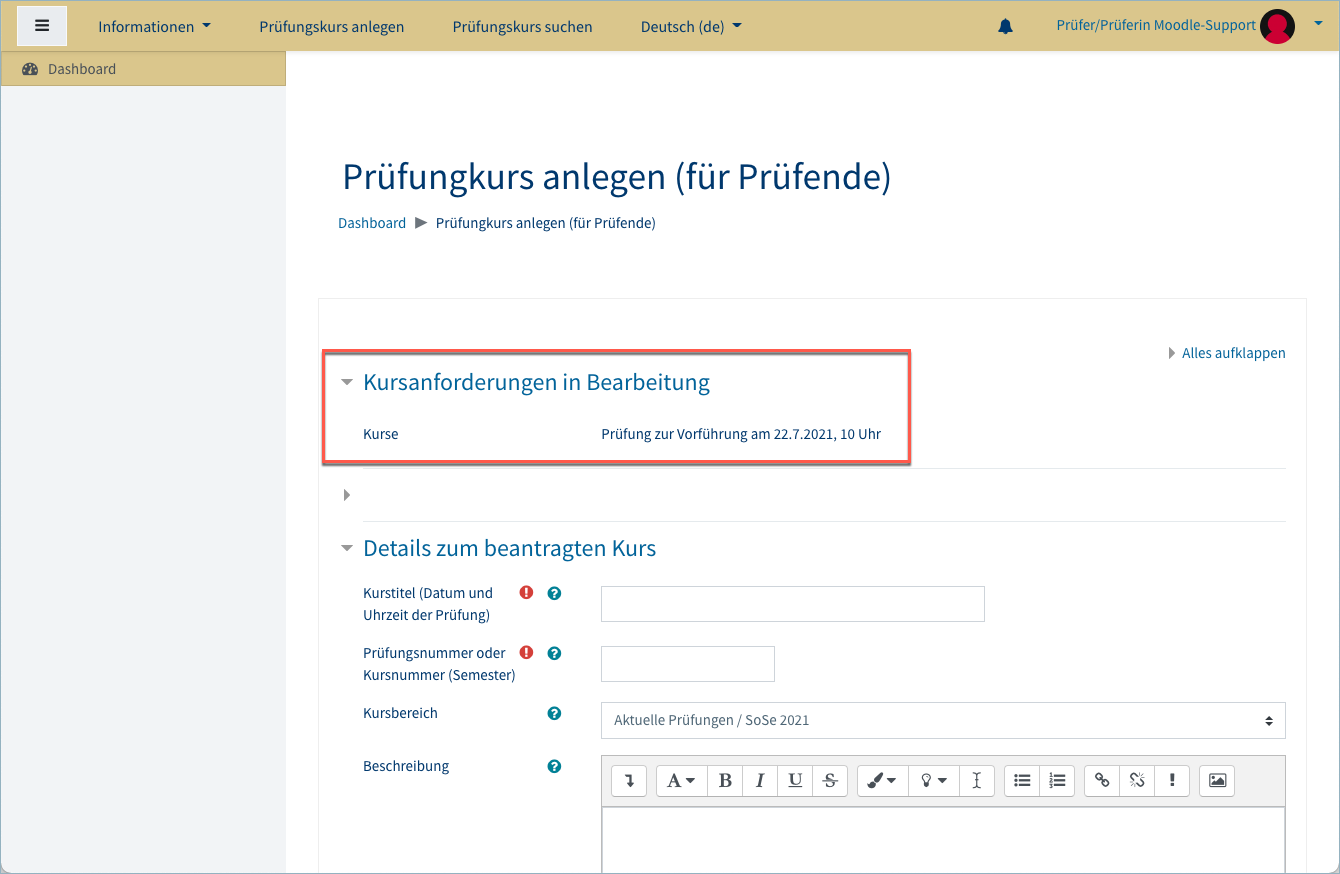Create the examination resp. the examination course
Written or material-based digital examinations must be carried out with the examination system, i.e. the examination Moodle, for reasons of secure long-term archiving. Accordingly, a separate examination course is created in the examination Moodle for each (written) e-examination. It is strongly recommended to create this examination course as early as possible, i.e. preferably already at the beginning of the examination semester. On the one hand, this allows the link to the examination course to be stored in AGNES. On the other hand, there is then sufficient time to
- get advice,
- build up a question pool,
- test functionalities and settings,
- to register for a digital exam,
- register support for the digital exam,
- to admit students to the course in a relaxed and timely manner,
- to set up access to the examination course for the responsible examination office, if necessary.
Procedure for setting up an examination course
Step 1: Access to the examination Moodle
https://e-pruefungen.hu-berlin.de
Login is only possible with an HU account or with an account that was created manually by the Support for Electronic Examinations (e-pruefungen-support@hu-berlin.de). The prerequisite for creating an account is the use of an e-mail address from a university or a comparable educational institution, e.g. from the FU Berlin.
For examiners, it is advisable to register in the course "Moodle Information for Examiners" after the first registration, as detailed help on how to use the examination Moodle and on the settings for digital examinations can be found there. On the following pages there will always be links to this in-depth information.
Step 2: Create an examination course
Please create a separate, new, empty course for each digital examination for each examination period (https://e-pruefungen.hu-berlin.de/course/request.php).
Step 3: Fill in the course request form
Complete the Course Request Form carefully to avoid problems later in locating the course or assigning the course to an exam for students.
This includes the following information:
- Course title: enter a unique course title that includes the title of the exam and the exam day and time.
- Exam number: In the short name, also enter the course number of the course to which the exam belongs as well as the associated semester and exam period (e.g. 1st date).
- Course area: Select the course area of your institute or institution in the course area "Current Examinations" (or "Mock Examinations").

- Course description: The course description appears when students are looking for the course or when they are to enrol themselves. Enter appropriate notes about the framework of the examination in the "Description" field.
- Enrolment key: An enrolment key must always be assigned, even if you enrol students manually and you do not want to use the enrolment method "Self-enrolment". This prevents an examination course from becoming freely accessible by mistake.
- Notes: You can enter comments, notes or requests to the Electronic Examinations Support here. If you do not wish to make use of this, simply enter any irrelevant character (X).
- Submit: To submit the form, click on the button "Request course via Electronic Exams Support".

For your information: The requested examination courses are all confirmed manually by the Examination Support. You cannot create courses yourself here, as you know it from the HU's Lehrmoodle.

Courses requested by you will be processed as soon as possible. You will see in a new request form whether courses you have requested have not yet been processed by Support.

As soon as the Support for Electronic Examinations has created the examination course, you will receive an e-mail confirmation and you will find the course on your dashboard.
New courses are initially hidden from other users and cannot be accessed or found. Only you and the Support for Electronic Examinations have access to the created examination course. Only after you have enrolled other people or made the course visible can other people see it and use it according to their role in the course.

